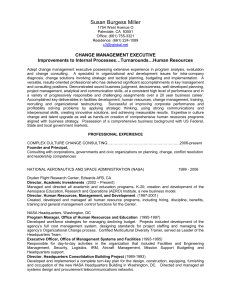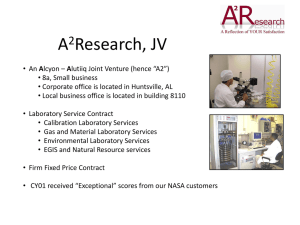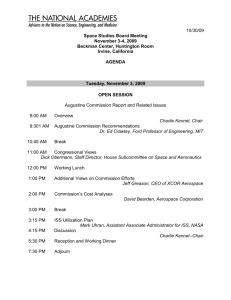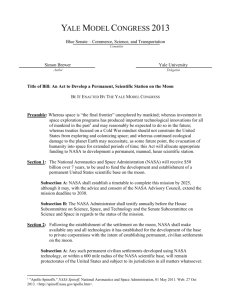Neg: Link – general
advertisement
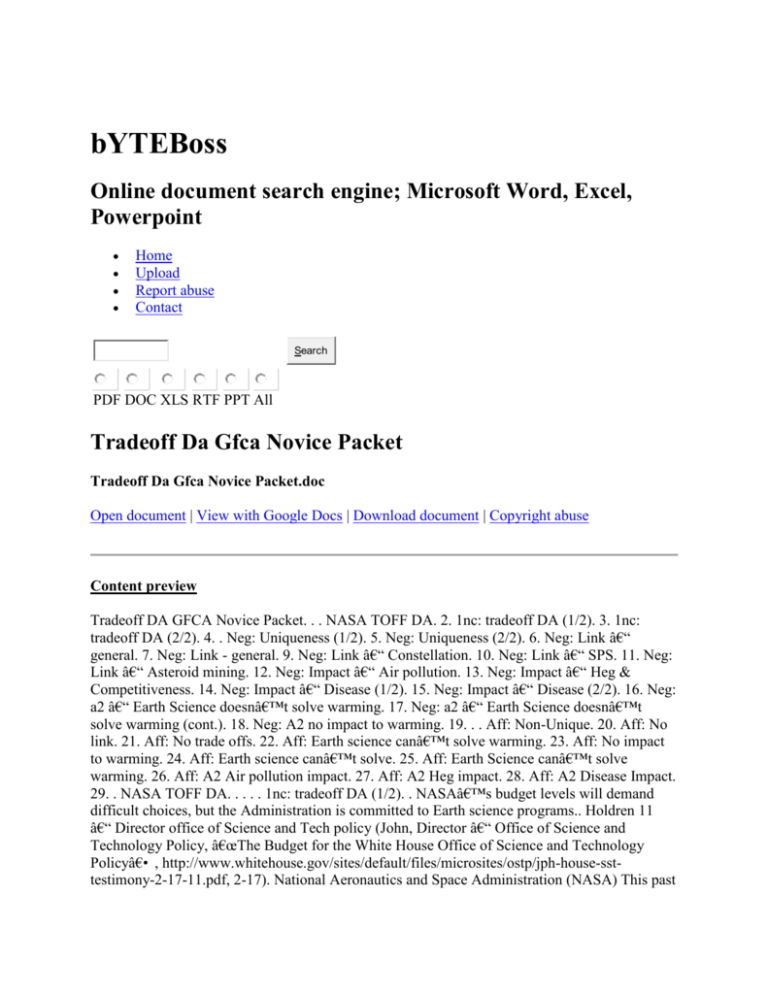
bYTEBoss Online document search engine; Microsoft Word, Excel, Powerpoint Home Upload Report abuse Contact Search PDF DOC XLS RTF PPT All Tradeoff Da Gfca Novice Packet Tradeoff Da Gfca Novice Packet.doc Open document | View with Google Docs | Download document | Copyright abuse Content preview Tradeoff DA GFCA Novice Packet. . . NASA TOFF DA. 2. 1nc: tradeoff DA (1/2). 3. 1nc: tradeoff DA (2/2). 4. . Neg: Uniqueness (1/2). 5. Neg: Uniqueness (2/2). 6. Neg: Link – general. 7. Neg: Link - general. 9. Neg: Link – Constellation. 10. Neg: Link – SPS. 11. Neg: Link – Asteroid mining. 12. Neg: Impact – Air pollution. 13. Neg: Impact – Heg & Competitiveness. 14. Neg: Impact – Disease (1/2). 15. Neg: Impact – Disease (2/2). 16. Neg: a2 – Earth Science doesn’t solve warming. 17. Neg: a2 – Earth Science doesn’t solve warming (cont.). 18. Neg: A2 no impact to warming. 19. . . Aff: Non-Unique. 20. Aff: No link. 21. Aff: No trade offs. 22. Aff: Earth science can’t solve warming. 23. Aff: No impact to warming. 24. Aff: Earth science can’t solve. 25. Aff: Earth Science can’t solve warming. 26. Aff: A2 Air pollution impact. 27. Aff: A2 Heg impact. 28. Aff: A2 Disease Impact. 29. . NASA TOFF DA. . . . . 1nc: tradeoff DA (1/2). . NASA’s budget levels will demand difficult choices, but the Administration is committed to Earth science programs.. Holdren 11 – Director office of Science and Tech policy (John, Director – Office of Science and Technology Policy, “The Budget for the White House Office of Science and Technology Policy―, http://www.whitehouse.gov/sites/default/files/microsites/ostp/jph-house-ssttestimony-2-17-11.pdf, 2-17). National Aeronautics and Space Administration (NASA) This past October, the President signed the 2010 NASA Authorization Act (the “Act―, Public Law 111-267), which stands as a statement of bipartisan agreement by Congress and the Administration regarding NASA and its many programs. NASA’s programs not only support the grand and inspiring adventures of space exploration, scientific discovery, and aeronautical advancement, but also provide an indispensable platform for observing the Earth to ensure that we have the information we need to cope with weather-related and other environmental threats to human well-being. NASA programs also fuel new technology development and innovation and help launch new products, services, businesses, and jobs with enormous growth potential. The Act will further our joint goal of placing NASA’s programs on a more stable footing and enhancing the long-term sustainability of these exciting endeavors as we chart a new path forward in space. The FY2012 NASA budget reaffirms the Administration’s commitment to a bold and ambitious future for NASA. Every initiative called for in the Act is funded, including: a robust program of space science and Earth science, including a commitment to invest in new satellites and programs of Earth observation; a strong aeronautics research program; the Space Launch System (SLS) heavy-lift launch vehicle and Multi-Purpose Crew Vehicle (MPCV) needed to support human spaceflight and exploration missions beyond Earth’s orbit; a vigorous technology development program; extension of International Space Station (ISS) activities through at least 2020, coupled with a plan to use this orbiting outpost more effectively; and the development of private-sector capabilities to transport cargo and crew into low Earth orbit, thus shortening the duration of our reliance solely on Russian launch vehicles for access to the ISS. Within the context of a difficult budget environment and the President’s decision to freeze non-security discretionary spending at 2010 levels for five years, NASA’s budget remains at $18.7 billion in the 2012 Budget. This budget level demands difficult choices, and those choices were made while keeping in mind the priorities of the Act as well as the collective desire of the Congress and the Administration to have a balanced program of science, research, technology development, safe spaceflight operations, and exploration. One such difficult choice was limiting the budget for the James Webb Space Telescope, keeping the project funded at $375 million in 2012, to assure NASA the opportunity to begin work on new scientific opportunities identified in the National Academies’ most recent decadal survey in astronomy and astrophysics. Similarly, the 2012 Budget reduces the planned increases in Earth-science research outlined in the 2011 Budget. The Budget demonstrates the President’s continued commitment to our shared 5 priorities even when difficult decisions are required, providing $1.8 billion in FY2012 funding for the Space Launch System and $1.02 billion for the Multi-Purpose Crew Vehicle, thereby laying the critical foundation for these exploration programs. As NASA reported in January of this year, it is still in the process of shaping these efforts and will discuss them in more detail in a report to Congress this spring. Similarly, the Budget provides a solid foundation for the commercial crew and cargo transportation programs that are necessary to provide safe and costeffective access to low Earth orbit, including sufficient support for the operations of the ISS. . . NASA has cut its space programs and has a flat budget for the next 5 years. That means any new space policy comes at the expense of Earth Science. . Space Travel.com 6/8/11( NASA Spending Shift to Benefit Centers Focused on Science and Technology NASA Spending Shift to Benefit Centers Focused on Science and Technology). . According to the report "NASA Spending Outlook: Trends to 2016," NASA's budget, which will remain flat at around $18.7 billion for the next five years, will also be characterized by significant shifts from space operations to technology development and science. With the shift in budget authority, NASA Centers focused on Earth observation, space technology, and aeronautics will see increases in funding, while those involved in human spaceflight will see major funding reductions. Indeed, the termination of the Space Shuttle program will lead to a budget cut over $1 billion for Space Operations, resulting in a 21% budget cut for the Johnson Space Center. Overall, the agency's budget for R and D will account for about 50% of all NASA spending.. . . 1nc: tradeoff DA (2/2). . Earth science is critical to US climate leadership and building a global response to climate change. Lewis, Ladislaw, and Zheng 10- James A. Lewis, senior fellow and director of the Technology and Public Policy Program at CSIS, worked in the federal government as a Foreign Service officer; Sarah O. Ladislaw, senior fellow in the Energy and National Security Program at CSIS, where she concentrates on climate change, the geopolitical implications of energy production and use, energy security, energy technology, and sustainable development; Denise E. Zheng, program coordinator and research assistant in the CSIS Technology and Public Policy Program, June 2010, “Earth Observation for Climate Change―, http://csis.org/files/publication/100608_Lewis_EarthObservation_WEB.pdf . . Better climate information has helped us move beyond the question of whether action to manage climate change is warranted to what types of actions and polices are needed. Information is key to an effective approach to climate change. At a national and international level, many countries are preoccupied with how to ensure that decisionmakers and user communities have access to the types of information that will make the climate efforts successful. This includes coordinated systems for Earth observation, enhanced modeling capabilities, an organizational structure that allows science to be more responsive to relevant policy questions or functions, and places where information can be gathered and made accessible to broad-based user communities. Meeting the needs of climate policy requires a transformation in how climate research is incorporated into public policymaking.4 “Operationalizing― information systems—investing in the Earth observation systems necessary for producing the right data over the right time and space horizons, coordinating data collection, interpreting and sharing to maximize the data’s benefits, focusing on the human and social science effects of climate change, improving modeling capabilities, and making this information accessible and relevant for a wide range of users—is a necessary step in designing effective U.S. climate policy. It also represents an opportunity for America to demonstrate global leadership and contribute to building global capacity to understand and more effectively respond to the climate. The climate negotiations in Copenhagen, Denmark, in December 2009, failed because of differences over how to share responsibilities and burdens. The challenges inherent in these negotiations will not be easily overcome. However, the troubled negotiations in Copenhagen present the United States with an opportunity. The 2008 CSIS report, CSIS Commission on Smart Power: A Smarter, More Secure America, called for the United States to use its technology and scientific prowess to engage other nations in efforts that serve both U.S. interests and the interests of the global community. This report identifies Earth observation and climate change as one such opportunity and provides recommendations on how the United States can, working with other nations, acquire the technology and build the institutions needed to assess and manage climate change. It suggests three steps that the United States can take: ■■expand international cooperation, ■■consolidate and strengthen its national effort, and ■■launch civil space policy in a new direction. . . Warming leads to extinction. Mazo 10 – PhD in Paleoclimatology from UCLA. Jeffrey Mazo, Managing Editor, Survival and Research Fellow for Environmental Security and Science Policy at the International Institute for Strategic Studies in London, 3-2010, “Climate Conflict: How global warming threatens security and what to do about it,― pg. 122. The best estimates for global warming to the end of the century range from 2.5-4.~C above pre-industrial levels, depending on the scenario. Even in the best-case scenario, the low end of the likely range is 1.goC, and in the worst 'business as usual' projections, which actual emissions have been matching, the range of likely warming runs from 3.1--7.1°C. Even keeping emissions at constant 2000 levels (which have already been exceeded), global temperature would still be expected to reach 1.2°C (O'9""1.5°C)above pre-industrial levels by the end of the century." Without early and severe reductions in emissions, the effects of climate change in the second half of the twenty-first century are likely to be catastrophic for the stability and security of countries in the developing world - not to mention the associated human tragedy. Climate change could even undermine the strength and stability of emerging and advanced economies, beyond the knock-on effects on security of widespread state failure and collapse in developing countries.' And although they have been condemned as melodramatic and alarmist, many informed observers believe that unmitigated climate change beyond the end of the century could pose an existential threat to civilisation." What is certain is that there is no precedent in human experience for such rapid change or such climatic conditions, and even in the best case adaptation to these extremes would mean profound social, cultural and political changes.. . . . . . . Neg: Uniqueness (1/2). NASA’s science program will continue, but there is strong pressure to stay within the budgets. Space Daily 7-20-11, “ FY12 House Funding Bill for NASA― http://www.spacedaily.com/reports/FY12_House_Funding_Bill_for_NASA_999.html NEH) . On July 13, the House passed a bill that addresses the FY12 NASA budget. The total recommended amount is $16.81 billion. Here are a few details on this budget. For FY11 the NASA appropriation was $18.448 billion. The Administration's FY12 request was $18.724 billion. But, the new recommended budget represents a decline of 8.9 percent or $1.638 billion. The budget report includes a key statement about NASA's future: "After several years of debate and compromise, the Congress and the Administration have finally settled on a consensus program for NASA in the form of the NASA Authorization Act of 2010 (Public Law 111-278). In order to successfully accomplish everything outlined in that Act, NASA needs to develop and pursue new and different ways of operating that will promote efficiency and economy; annual budget increases can no longer be counted on as the means for achieving mission goals." The message to NASA from the House seems clear; "Clean up your act and get more efficient." In view of the current debt crisis, retirement of the Space Shuttle and transfer of low-orbit cargo and crew space transportation functions to the private sector, NASA is going to be pressured to skinny down to fighting weight and find ways to do more with less. This may seem difficult for an established and bloated bureaucracy. Nevertheless, a continued viable space science program is going to have to adjust to the new reality of smaller budgets, and possibly fewer civil servants at NASA. Remember, when times are tough and elections are approaching, the space community represents only a small part of the voting public. Without structural changes and innovative improvements in productivity within the NASA and contractor community, the future of U.S. space exploration could be very dim. . . Earth Science will maintain dominance in funding now. Motl 7-27-11, Luboš PHd of Philosophy from Rutgers University and has been a Harvard Junior Fellow (2001–2004) and assistant professor (2004–2007) at Harvard University “ NASA: astrophysics vs Earth science budget― The Reference Frame, http://motls.blogspot.com/2011/07/nasa-astrophysics-vs-earth-science.html NEH) . NASA stands for "The National Aeronautics and Space Administration". You would associate it with astronauts, perhaps pilots, space research, and the Universe. Some young readers may even be ignorant about those things but NASA brought the first men to the Moon and has done lots of other fascinating things. But look at this graph of funding from Nature: Between 2011 and 2012, the astrophysics budget is expected to drop from $1.1 to $0.65 billion, i.e. by 40 percent. Astrophysics would become almost as small as heliophysics (physics of the Sun) which keeps its $0.6 billion. Meanwhile, planetary sciences are proposed to grow by one or a few percent to $1.5 billion and the Earth science should only drop by less than 5 percent to $1.7 billion, preserving its dominant position. . . . Increase in earth science programs. Morrissey 11 - PHD in Chemistry (Susan R., “NASA: Funding Is Flat, But Earth Science Programs Grow―, 02/28/11 http://pubs.acs.org/cen/coverstory/89/8909cover7.html). The President’s 2012 request holds the National Aeronautics & Space Administration’s budget flat at $18.7 billion. The agency is not reporting budget breakdowns for 2011. Instead, gains and losses are being measured against the 2010 budget. The request provides continued support for the International Space Station (ISS), setting its 2012 budget at $2.8 billion, a 22.8% increase from 2010. The support would allow expanded use of the station’s research capabilities. The request also outlines a plan for research oversight by a nonprofit organization. Earth science programs would also see growth—increasing 24.9% from 2010 to $1.8 billion in 2012. This boost would enable continued development of Earth-observing satellites such as the Orbiting Carbon Observatory-2, which would provide information about the planet’s carbon cycle, and the Ice, Cloud & Land Elevation Satellite-2, which is an orbiting laser altimeter. Funding for the space shuttle will drop significantly. The shuttle is set to fly its last mission this summer, and then the program will be ramped down. Therefore, the budget slates $665 million for the program in 2012, a $2.4 billion drop from 2010. These funds will go into other programs.. . Budget re-allocation to Earth Science Now. . Space Travel.com 6/8/11 NASA Spending Shift to Benefit Centers Focused on Science and Technology http://www.spacetravel.com/reports/NASA_Spending_Shift_to_Benefit_Centers_Focused_on_Science_and_Tech nology_999.html. . "Budget allocation across Centers will vary greatly," said Steve Bochinger, President of Euroconsult North America. "As NASA shifts priorities for human spaceflight from Shuttle operations to Human Exploration Capabilities and commercial spaceflight, the budget will be redirected to a range of technology development programs. Likewise, as NASA shifts its science mission focus away from space science to Earth science, the science budget will be redistributed among centers." . Neg: Uniqueness (2/2). . Earth science funding is appropriated. Connell 6/2 (Kathleen, CEO @ Mission to Humanity, San Diego State UniversityGreen Energy Program. . The current five-year government spending plan should allow NASA to substantially ramp up its Earth science program. The program faced constraints and uncertainty just a year ago, but the new spending plan provides an additional $2.4 billion over the previous blueprint. This could allow NASA to fly a few missions each year instead of one every couple of years, one official said. . . Science spending is up – however, funding isn’t guaranteed. Wakeman 6/8 (Nick, editor @ Washington Tech, http://fcw.com/articles/2011/06/08/nasa-budget-prioritiesshift.aspx). . As budgets tighten and priorities shift, NASA is cutting $1 billion from its pace operations budget, but spending more on other science and technology areas that will reshape the agency's mission, a new study shows. “As NASA shifts priorities for human spaceflight from shuttle operations to human exploration capabilities and commercial spaceflight, the budget will be redirected to a range of technology development programs,― said Steve Bochinger, president of Euroconsult North America. The firm and its partner Omnis Inc. have released a new study, NASA Spending Outlook: Trends to 2016, which analyzes NASA’s budget. As space operations shrink, the science budget will be redistributed among NASA centers, Bochinger said. Among the findings: The Science Mission Directorate saw an 11 percent bump in 2011 and will have a $5 billion through 2016. Goddard Space Flight Center and Langley Research Center will benefit because of the work on Earth science projects. The Exploration Systems Mission Directorate will hold steady at about $3.9 billion but funds will shift away from human exploration activities. The new Space Technology Directorate will get $1 billion a year from 2012 to 2016. Langley, Glenn and Ames research centers will benefit because of their work on new technologies for exploration and robotic spaceflight. NASA is restructuring the Aeronautics Research Mission Directorate to focus on fundamental aeronautics and development of technologies for the Next Generation Air Transportation System.. . . Science is being funded now. PRWeb 6/20 (http://www.sfgate.com/cgibin/article.cgi?f=/g/a/2011/06/20/prweb8584611.DTL). . NASA budget highlights: The 2011 NASA budget is up slightly at $18.7 billion, from 2010. 26.3% of NASA's budget ($5 billion) is in the "Science" category. "Science" includes Astrophysics, Earth Science (36% of the Science budget), Heliophysics, James Webb Space Telescope and Planetary Science. The Science budget slightly exceeds the Space Operations budget (25.4%) Space Operations has been cut drastically ($6.1 billion to $4.3 billion), due to ending the Space Shuttle program. However, Space Technology has been increased ($275 million to $1.1 billion).. . . 2012 fiscal spending blueprint generous towards earth science. Click Orlando 11 Monday, February 14, 2011 (http://atlanta.pointslocal.com/story/atlanta/184044/budget-freeze-slows-nasa-development) . . NASA’s budget would be frozen for the foreseeable future under the fiscal 2012 spending blueprint President Barack Obama released Monday. The freeze would mean slower rocket development, which is expec Search Wikipedia for Tradeoff-DA-GFCA-Novice-Packet Search Bing for Tradeoff-DA-GFCA-Novice-Packet Search Google for Tradeoff-DA-GFCA-Novice-Packet Latest files Facilities Inspection Services Eastbay.pdf Facilities Inspection Services East Bay Aluminum Scaffold Bay Area.pdf Scaffolding Company, Aluminum Scaffold Bay Area Solar Farm Developers.pdf Solar Farm Developers Biotechnology Company San Francisco Bay Area.pdf Newomics BioTechnology Company San Francisco Bay Area Italfood Water Guide.pdf Importer & Wholesalers of Selected of Foreign and Domestic Food Products Deck Refinishing Walnutcreek.pdf AllproDeck,complete resource for Deck Refinishing, Interior and Exterior Painting, Deck Restoration, Power Washing in Walnut Creek,California. Light Duty Towing Roadside Assistance.pdf Action Towing & Road Service complete resource for Heavy & Medium Duty Towing, Light Duty Towing in California. Chocolate Ptca Balloon Catheter.pdf QTVascular,Innovative in Minimally Invasive Treatment for Vascular Disease Treatment product includes Balloon Catheters. Centrifugal Pumps Reliability.pdf Price Pump,Pump Manufacturer in California complete resource for Magnetically Driven Centrifugal Pumps, Close Coupled Centrifugal Pumps, Vertical Centrifugal Pumps, Air Operated Diaphragm(AOD) Pumps. Executive Search Firms San Francisco Bay Area.pdf Hager Executive Search,complete resource for Executive Search Firms in San Francisco Bay Area. Website thumbnail Thumbnail provided by www.webthumbnail.com Recommended Howard Rank9599 o howard_rank9599. 0009. CRESCO. INT 3RD ST & 2ND A o Jain Theory of Value-Based Systems and Software Engine Mentoring Sra Final * * * * The Nancy Ames Case - A Departmental Admi Sub Junior Girls Billiards And Snooker Sub Junior Girls Billiards & Sn. S.NO. Best Of 3. help help. Specific. Route. Details. Patrol. Service. Ut5 0627 TA5-3 graphing. TA5-2 Graphing. TA5-1 Graphing. L Lista Utiles Primaria 6 P I . 6 P E . 5 P I . 5 P E. 4 P I. 4 P E.3P Free State 10 06 Public-List. Lamprotornis nitens. Whiskered Tern. P2 Hoja3. Hoja2. Hoja1. jornada 1. jornada 2. jornad Listado Ventas Nuevo Lec3b3n Octubre 2011 o Hoja3. Hoja2. Hoja1. bsk Inmobiliaria Cuatro. Esc o Pvvs Program Procedures Forms Tracking 2004 01 28 Tracki ng. Proced ures. Forms. Weldin g Proced ures. Model checki ng Hscc07 M o d e l C h e c k i n g G e n e t i c R e g u l a t o r y N e t w o r k s w i t h P 2 2 6 l e c 4 J d a C h a p t e r 2 E x a m i n i n g R e l a t i o n s h i p s i n D a t a E x a m i n i M a r i o n b a p t i s t c h u r c h v a . c o m B u l l e t i n 3 8 5 8 No thanks



